YOUR OYSI HAS BEEN GRANTED
AN INTERVIEW WITH FOUNDER & OWNER CLETUS KUHN

The blade industry has seen its share of different hardware companies throughout the years, offering innovation that may or may not have been fully warranted. From blunders like Exile Wheels or Kizer‘s Armortech Frames, to booms like Xsjado‘s Mook and Night Hardware’s UHMW soulplates, some have flourished, some have flopped, some have done both (funny all examples are now defunct).
The desire to develop a flat frame conducive to grinding without compromise has always been a topic that many frame companies have strived to address. From the likes of Tom Hyser‘s Fizik Frame, or the never to be seen predecessor EPOCH, to Ground Control’s approach with the Hi-Lo and Create’s CRS frame, we’ve seen a handful of theories in this subject, but not many have stood the test of time. Come 2017, Cletus Kuhn enters the picture, introducing his Oysi concept, which proposes the use of different sized wheels to main a flat profile while minimizing wheel bite and maximizing grind capabilities. Since its inception, it is has received a wealth of praise and followers. With celebrating the company’s 1 year anniversary of being in full production, we felt it was appropriate to sit down with Cletus and get a full understanding of how his theory of the Oysi frame came to fruition.
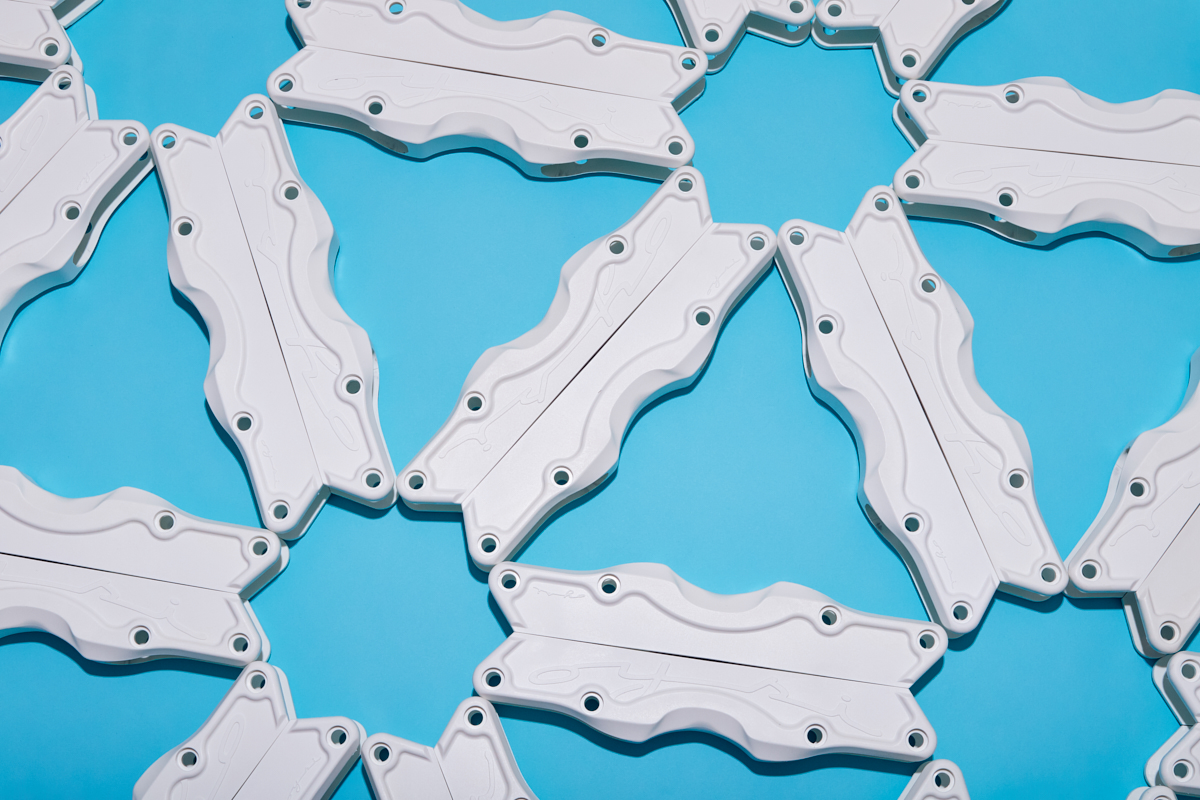
WRITTEN & PRODUCED BY : RYAN LOEWY
PHOTOGRAPHS BY JONATHAN LABEZ AND LUKE BENDER FOR BE-MAG
Let’s start with the obvious, how the idea of the frame came to mind. Do you have a background in engineering? Or did you have to learn the process of design and production yourself?
The idea comes from wayyyy back. I expect every fifteen year old aggressive skater in 1996 had the same idea. We would always talk about how cool it would be to have a huge groove. You know… if we could just move the middle wheels out little further…. This concept really hails from when aggressive frames were still evolving from rec frames and we still hadn’t fully realized the benefits of anti rocker wheels, we were still skating on 72mm wheels and 58mm midgets. We would spend all day skating to spots around town just to grind a ledge or rail for a few hours, and then skate to the next spot. Over the years frames became increasingly focused on smaller and smaller wheels with very flat profiles, the intent of this being increased stability jumping, grinding and landing gaps. So as time carried on into more modernized blading, things moved further and further away from the aspect of skating and more and more narrowed on grinding and stunts. This was fantastic for the level of skating it produced, but it started to subtly remove the pure enjoyment of having wheels under your feet that really brought everyone to this point in the first place. Over the years I used nearly every frame out there, predominately riding anti-rocker for well over fifteen years.

There were a few really good flat frames that appeared in the last decade but still didn’t deliver what I was looking for from a frame that was intended for being skated with eight wheels. Then just over three years ago I skated anti rocker again and it made me realize that I wasn’t enjoying the skating part of all this in the way I should. I wanted to be able to skate somewhere and grind without having to give up so much for one or the other. This feeling began sprawling toward the intent of designing something new. Everyone’s goal is to tuck the wheels as close to the foot as possible and in recent years people had begun recessing larger wheels by cutting out soul plates above the outer wheel with even a few production soul plates out there having this ability as a standard feature. Fitting a 72mm wheel on the outside, if it was right against the bottom of the foot, it’s not an exceptionally tall height. When you then look at the relative axle position, it starts to become clear that we’re not always getting the best advantage over this relationship and when dealing with a 72mm wheel; things can quickly start feeling really tall. So once the outer wheels are set as close as possible to the boot and we consider the UFS bolt placement, we can start lining up 58-62mm wheels in a manner that complements the outers, which provides an offset (rocker) to complement the length of the wheelbase and expand the area available for the groove, all while keep the frame sidewall height acceptably compact. This helped develop the basis of geometry leading to a very versatile chassis.
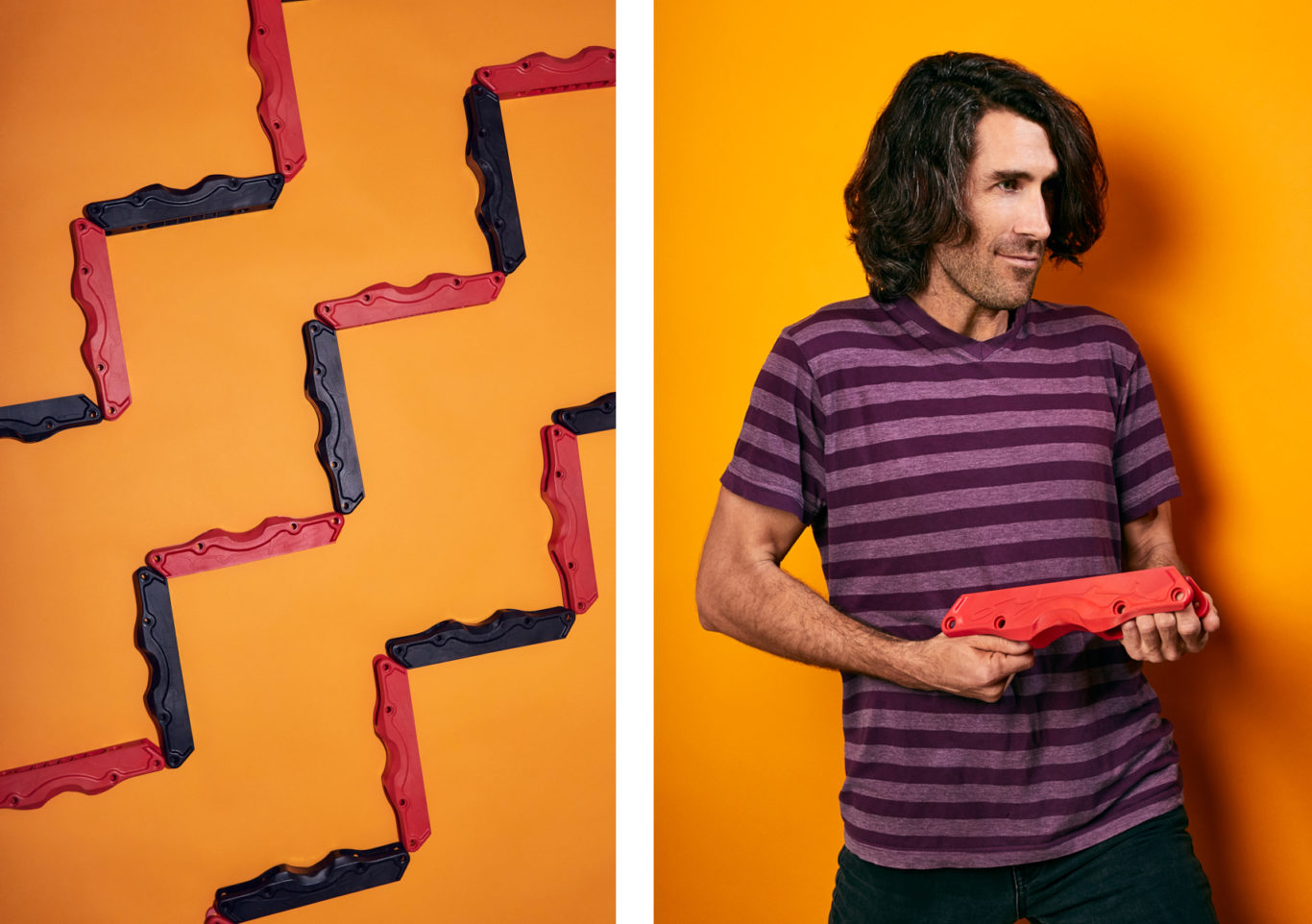
Yes, I have a degree in mechanical engineering focused on race car vehicle dynamics. I worked in the Nascar industry for a few years after graduate school and ultimately decided that it was too life consuming. After some years teaching and freelancing with web design and photography, I finally decided to work in HVAC consulting engineering, which is best described as high level design and specification of air conditioning systems and other mechanical infrastructure for large buildings, with a focus on reducing energy consumption. It’s not as exciting as racecar engineering but it’s very stable and has provided me the ability to start a blade company. So, finally I am able to direct my formal education and acquired experiences towards a purpose I really believe in and an activity that I truly enjoy.

The design process of a product was something I was very familiar with. This comes from formal engineering education (having a fundamental understanding of material properties), the vast array of ideas and applications seen in my professional experiences and thousands of hours using CAD software. Overall the design portion of a project like this is a very challenging exercise in developing what you want with what’s realistically possible, given the dimensional standards you must work within (UFS) and how detailed are you willing to get with the minutia of the features to produce the result you have in mind, while balancing all these things against the materials that are available.
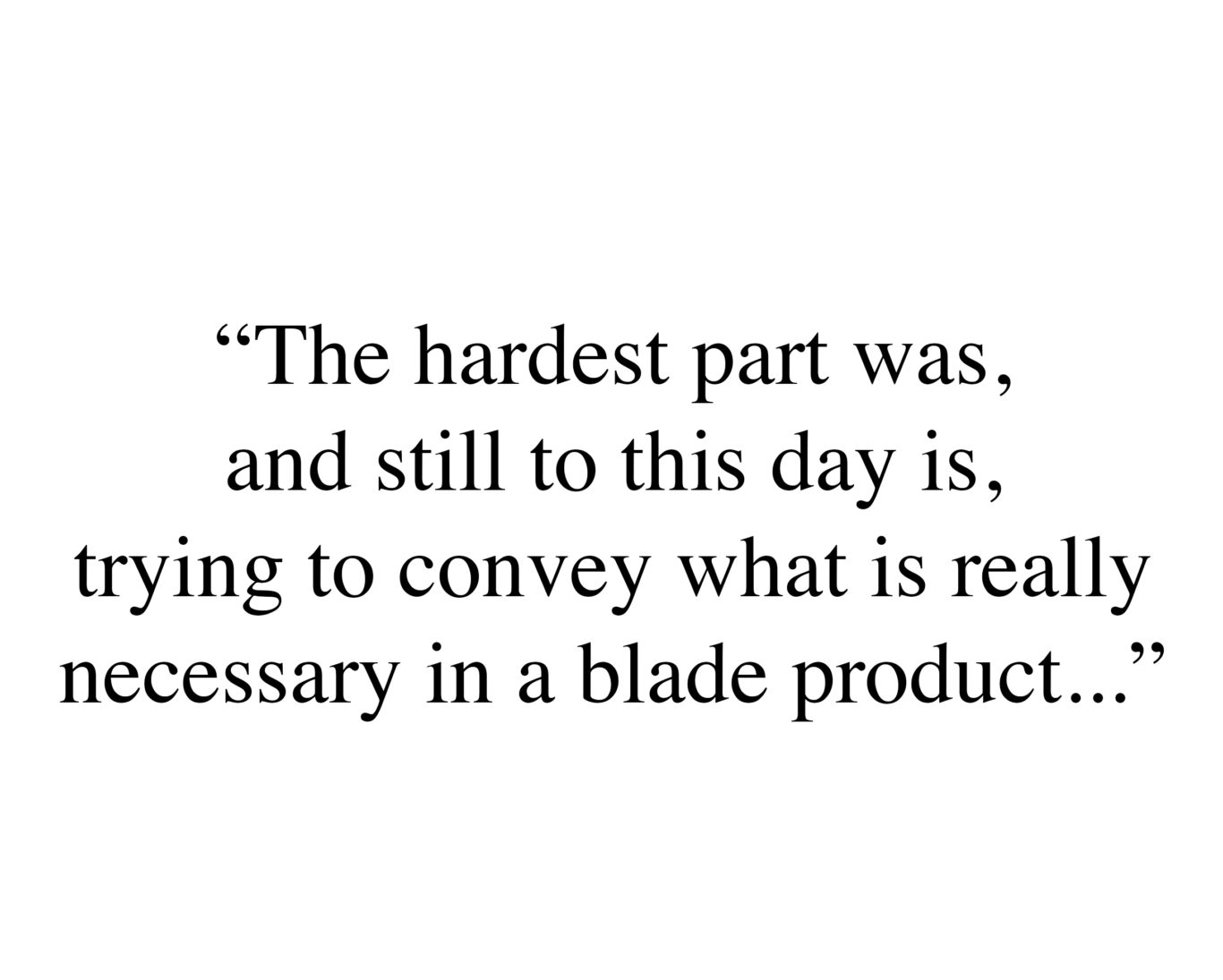
The plastic part production process is something I was not very familiar with. The production process starts when you finally decide you are done with the design and now it’s time to have someone make the tooling. Yet in the design of the tooling there were a lot of details and features which needed to be revisited in order to be able to make a tool that could actually produce the part. This had a steep learning curve for me and with a very aggressive timeline for release there were weeks where every night I was up extremely late to provide a revision on some details without compromising the intent of the design or adding unnecessary weight to the part so we could move forward. Then there was the aspect of finding and working with the right people in the various industries that are needed to bring everything together – people that I could depend on to be as focused I was on making a quality product. I was very fortunate to have the help of other bladers pointing me in the right direction and providing key contacts to compile everything necessary to take on this type of endeavor.
The hardest part was, and still to this day is, trying to convey what is really necessary in a blade product to stand up to the abuse it is expected to receive – people have no idea what we put our equipment through and there is a really delicate balance between efficiency of the design and robust integrity of the part. This resulted in months of delays to get out the pre-orders and I catalogued a lot of the hurdles and setbacks with emails sent regularly to everyone who had placed a pre-order (Infinite thanks for everyone’s patience!)
The name Oysi is pretty intriguing, where did that originate from?
The name comes from the center four letters of my middle name Aloysius (which is why it’s pronounced as “wish” – al-ə-WISH-əs ) and this was my paternal grandfather’s first name. I was named after both of my grandfathers Cletus Banwarth and Aloysius Kuhn (Cletus Aloysius Banwarth Kuhn). After spending a few months writing potential names out, narrowing them down, testing them with different fonts, I didn’t like any of them. They all seemed very expected, kind of ordinary after a few times looking at them. They just didn’t work for something I would be happy with long term. It’s not that I particularly wanted to name the company after myself, but I eventually started thinking about using my middle name somehow, since it’s unique and pays homage to my family and my grandfather. Using Oysi as the name draws inspiration (and confidence of getting away with a strange name) from the name Xsjado. When they first debuted I couldn’t pronounce the name. It seems like it took me a few years to piece it together that my friends had been talking about shadows and I had never seen them, but I had seen “eksjaydohs” in a catalog. Deciding on the name Oysi came down to a conscious decision of accepting that people won’t know how to pronounce it, but it’s a company with a product that should stand for itself regardless of the name, and eventually I hope people will come to recognize the name and eventually it will come to represent something important for them about blading.
So, how’s the response been?
Response has been helpful, that is the best way to describe it. I mean I could just say “oh yeah it’s been great”, but it’s far beyond that. So many people have fully jumped on board in their support after skating the chassis, even providing their insight and experience to answer questions for others and to clarify misconceptions or misstatements about particular features. Many people are already encouraging Oysi to make more products and when I hear from someone they are impressed with the quality and function of the current product, it gives justification to all the time spent in design and validity to the annoying attention to detail in the production process as well. There’s of course negative comments out there as well, but those sometimes prove to be the most helpful. Response to the name specifically has been all over the place. I’ve read several internet opinions expressing that the name is stupid. Others have done their research to learn about where the name comes from and will courteously explain this to those who don’t understand. There are plenty of opinions as to the aesthetics of the frame as well. Especially important are opinions and thoughts that arise from actual usage, comments on physical dimensions and sharing of ideas on what could be improved. I pay attention to all of these things people have to say and constantly think of ways to incorporate them into future designs. A great example in regard to reception of the name and product is that one person had been avoiding the chassis because of the name, but after getting past that and actually using it, they expressed their opinion on how great it felt to skate. This is exactly the intent of the chassis throughout its development and arrival to market – we wanted to create something new that people will enjoy.

I see that Robbie Pitts and Miguel Ramos are your main riders. Any plans for additional riders? Maybe a video?
We have four riders right now. We actually started out by asking Greg Freeman (Glen Fuego) to test the first prototype and be part of the team. He is from Lancaster, Massachusetts but has been living in Denver, CO for many years. As I got to know Greg over several years on many various trips to Colorado (including repeated Mile High Battles and Colorado Road Trips). I have this memory of him shredding around on a pair of lightnings on many occasions, doing super long airs across a quarter, getting down on some current style grinds in these old boots and just tearing it up. With this in mind as I was developing the chassis it always seemed like it would be well suited for his skating style. Miguel Ramos (Puerto Rico) and Robbie Pitts (Melbourne, Australia) are perhaps the most active riders and are more known throughout the world. Certainly the chassis suits Miguel‘s skating as well. Miguel suggested that Robbie would like the frame, and with all the versatile maneuvers that we see from Robbie, he offers yet another style that works well too. After this Greg recommended that we get in touch with Andy Leitermann (Massachusets) as well and so he is also riding for us.
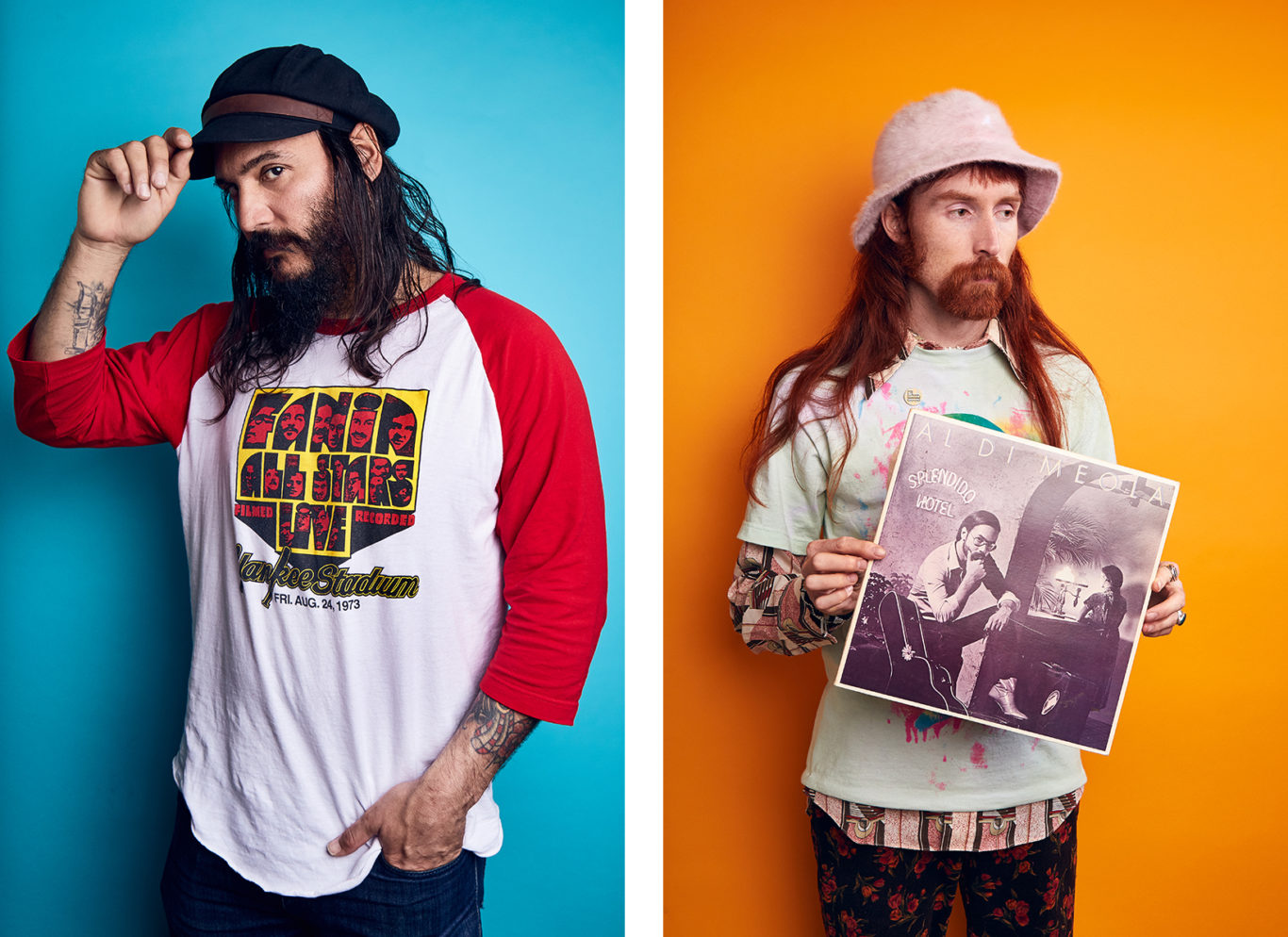
All four of them are great skaters, awesome people, and have been very instrumental in testing of materials and feedback ( we haven’t stopped testing new materials yet, but so far nothing meets the performance of what is used for our production ). right now there’s no explicit plans to add additional riders or to not add additional riders either. The idea in creating our team is to build it with people that enjoy riding the chassis and who feel that it complements the experience they enjoy and like to have on blades. With that in mind we also don’t seek to require specific ideas, or skating styles, or clothing styles, or a certain number of edits or clips from our riders. We just want them to enjoy riding the chassis, clearly enjoy blading, and believe in its future. No plans for a video right now, but I think we should probably get something going.
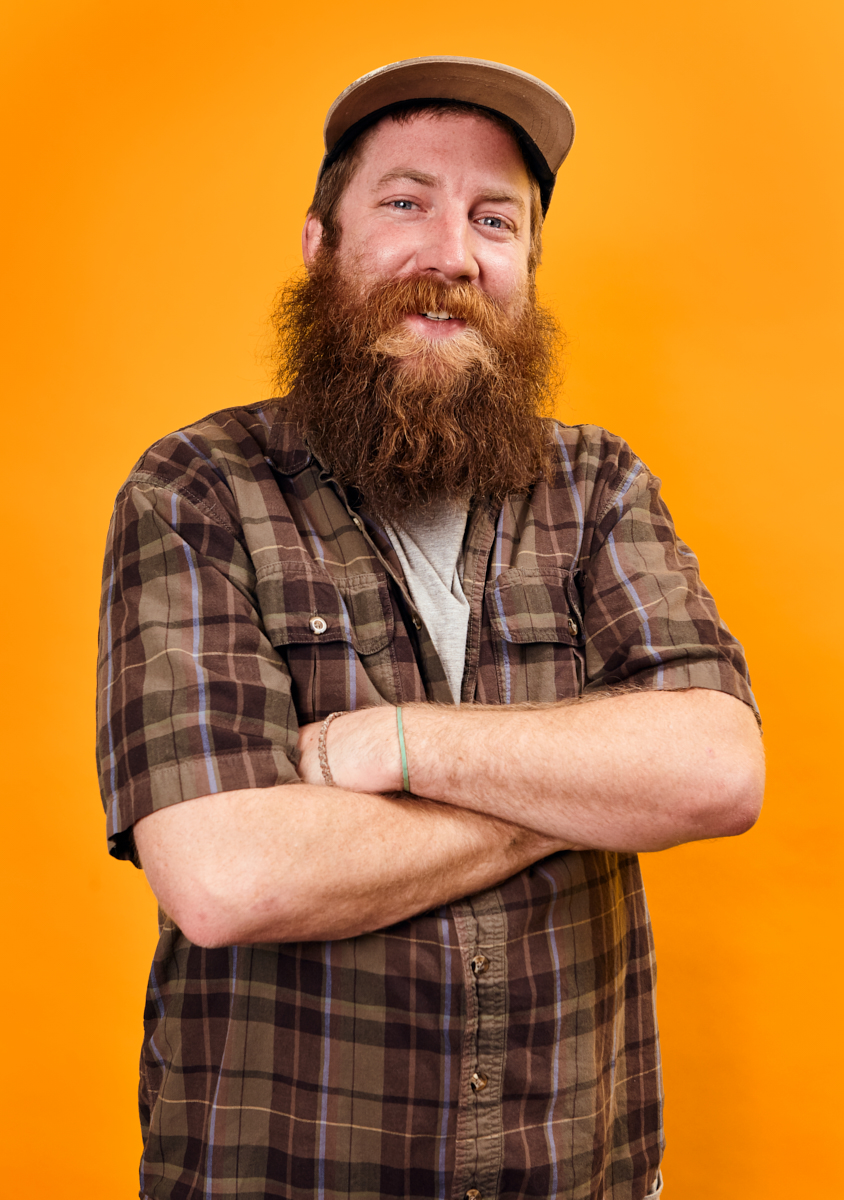
You’re continuously testing new material, but do you have any other designs that you’re considering trying, or are you sticking with this current design for the time being?
There’s so much feedback on how the chassis works so well, across so many uses and styles, but the biggest concern for the average foot size blader is the length. However, the length of the wheelbase is also what gives it such an explicit feeling and function in harmony with all the specific dimensions and geometry. With these things in mind, coupled with all the great feedback and opinions on different wheel sizes and wheelbases…..yes there is consideration for designing another frame with the intention to produce a similar experience for smaller feet. However, this just can’t happen as soon as we’d all like. If it was affordable to put out a new design every year, that would be awesome, but it’s really expensive.
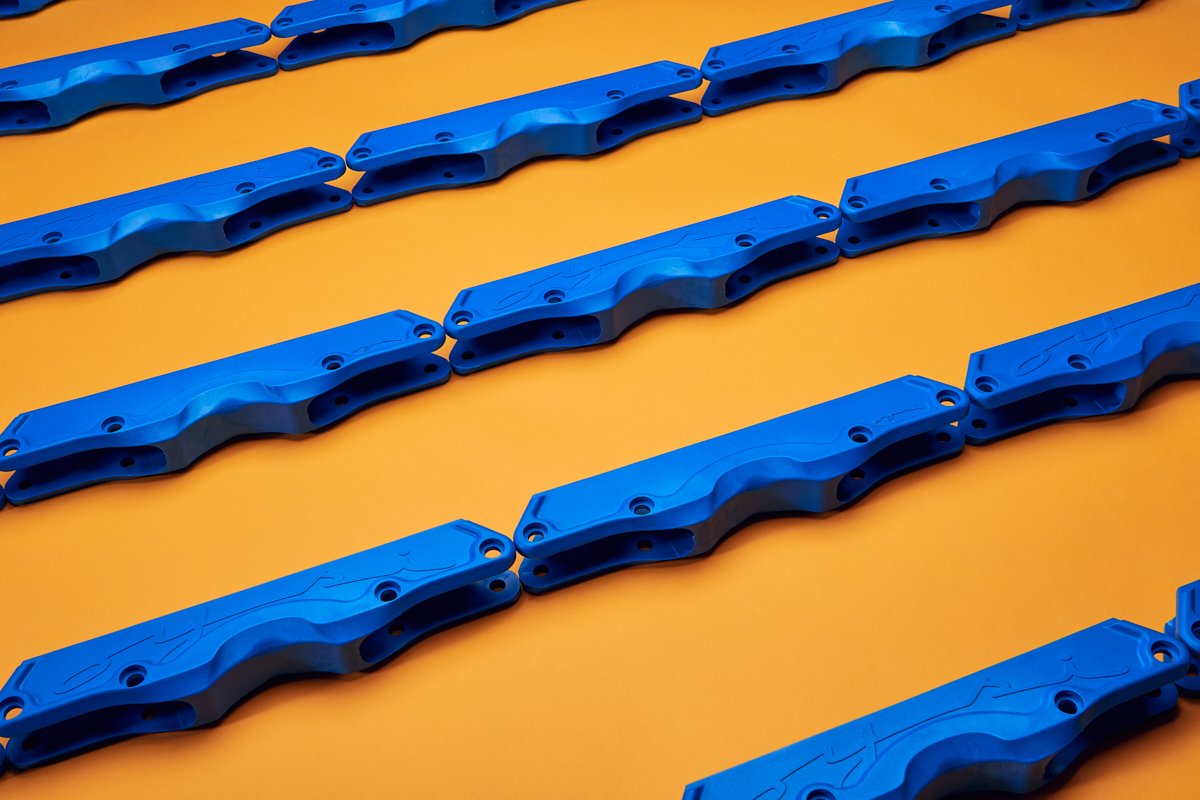
The engineering, design, prototyping, testing and production is so challenging, time consuming and stressful that it’s both the most difficult and enjoyable part of the whole process, equal only to the incredible feeling of finally seeing other people skating the final product. We have investigated what could be done to modify the current tooling to produce a similar chassis with different wheel geometries, but at this point it appears that approach would be too much of a compromise to the intent of a new design. So for now this is the only design in production and it will really depend on sales of the current design and ability to keep up with demand. We will probably make some more colors when manageable. With the resources and contacts we now have as part of creating this first product, another could be much more straightforward and faster to market, but if it is too much easier that might mean it’s not pushing the innovative side as much as it should be.
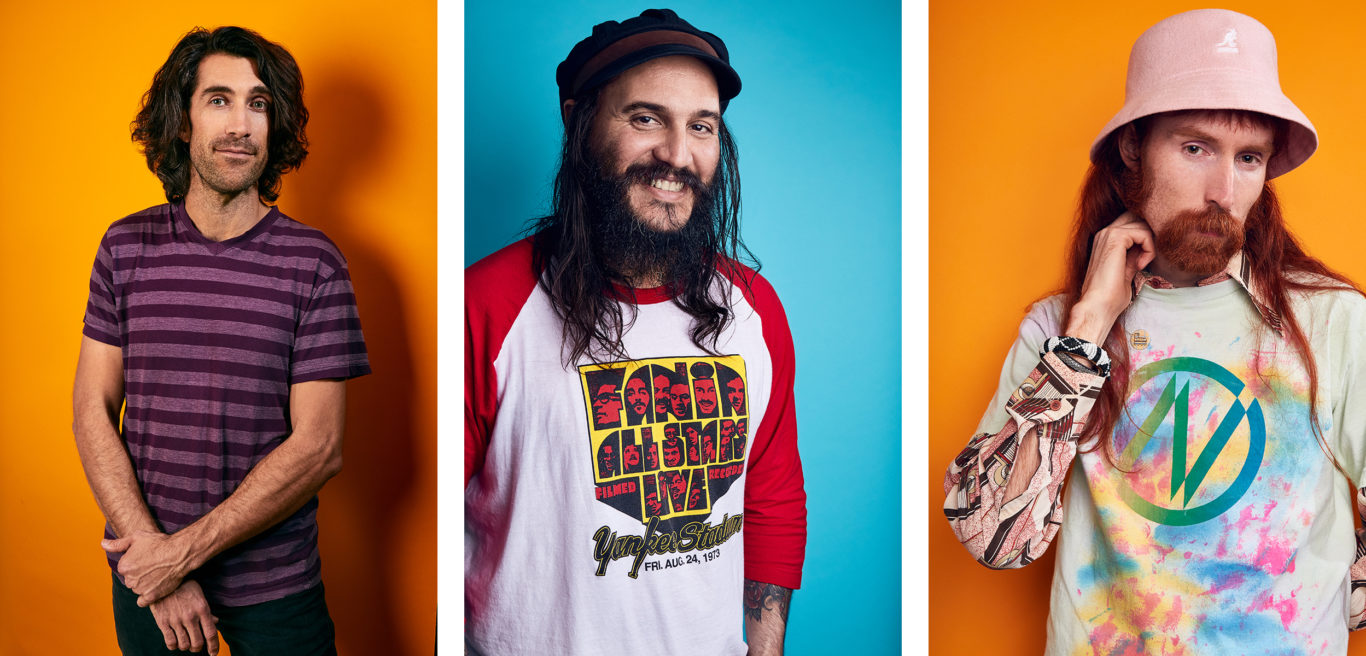
FOLLOW OYSI ON INSTAGRAM HERE AND FACEBOOK HERE
FOLLOW JONATHAN LABEZ ON INSTAGRAM HERE
FOLLOW ROBBIE PITTS ON INSTAGRAM HERE
FOLLOW MIGUEL RAMOS ON INSTAGRAM HERE
FOLLOW GREG FREEMAN ON INSTAGRAM HERE
FOLLOW ANDY LEITERMAN ON INSTAGRAM HERE



